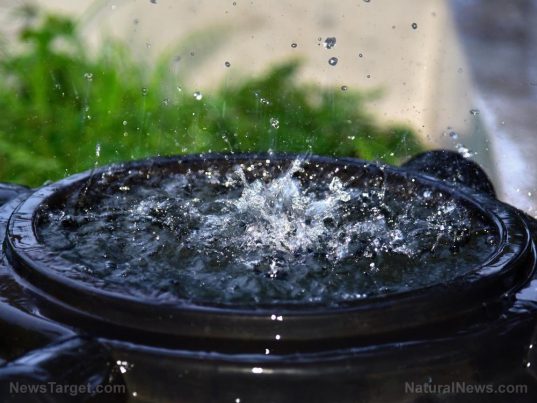A primer to harvesting rainwater for your permaculture garden
Wednesday, November 14, 2018 by Edsel Cook
http://www.bugout.news/2018-11-14-a-primer-to-harvesting-rainwater-for-your-permaculture-garden.html

The availability of water can make or break your homestead. An article in New Life On A Homestead covered the basics of collecting rainwater to nourish your permaculture garden.
Permaculture seeks to create sustainable and self-sufficient agricultural systems. It takes advantage of features found in natural ecosystems or replicates them outright.
To design your own permaculture-inspired harvesting system, start by studying the flow of rainwater in your area whenever it rains. Figure out where it goes, gathers, and drains.
Start this survey at the highest point of your watershed. This makes it easier to track the flow of water because it hasn’t built up speed and spread out yet.
Keep your design small and simple. Stick to strategies that you can complete on your own in a short amount of time.
You want the rainwater to filter into the largest surface area of soil possible. You must spread it out and slow it down.
Don’t forget to factor in the possibility of heavy rains that will cause overflows. Make the most use out of small, shallow-rooted groundcover plants such as clover.
Set up each part of your rainwater harvesting system so that they fulfill multiple roles. Last but not least, always keep an eye on your system so that you can improve it.
Permaculture techniques to gather rainwater and improve the water bed
You will need to set up sheet mulching that stores rainwater, stops the growth of weeds, and insulates the soil from weather. Pick perennial plants and trees that do not need a lot of water. Whenever possible, use local flora.
Cut perpendicularly into sloped soil to create a basin. Move the soil from that excavation to the downhill side of the basin to create a berm. Rainwater that goes down this slope slows down when it hits the basin. It spreads out and gets absorbed by the soil.
Terraces are required for steeper slopes with angles of 33-50 degrees. Cut a series of steps that follow the shape of the land. Set up a berm or a retaining wall on the edge of each terrace to reduce overflow.
French drains are exposed trenches filled with porous material. The filler allows people to walk on it without a problem while also permitting water to quickly drain. Set these up on either side of a driveway, pathway, or similar waterproof surface. Put plants next to them for better irrigation.
An infiltration basin is a shallow hole with slightly sloping sides and a flat bottom. It encircles a full-sized tree, leaving only a small area around the base of the anchor plant, and measures around 1.5 times the size of the tree’s canopy. Fill them up with sheet mulch and then add plants.
For dry areas, set up sunken garden beds and waffle gardens
If your area sees little in the way of precipitation, set up sunken garden beds. Dig perpendicularly into a slope or in the direction of the water bed. Pile displaced soil beside the sunken bed to create a raised bed.
Fill the sunken bed with mulch before planting. Water that rolls off the raised bed will fall into the sunken bed.
For the driest of areas, build a waffle garden. Dig square-shaped holes no deeper than one foot with each side measuring two to three feet. Each square should be 1.5 feet apart.
Use clay or adobe to build sturdy walls between between each square to insulate their contents. Fill up to two-thirds of the hole with sheet mulch. Plant crops later.
Visit Homesteading.news to find out more about setting up rainwater harvesting systems for your farm.
Sources include:
Tagged Under: Tags: gardening, green living, home garden, Homestead, homesteading, mulching, permaculture, preparedness, prepper, prepping, rainwater basin, rainwater harvesting, sustainable living

